ляляля
1/55
There's no tags or description
Looks like no tags are added yet.
Name | Mastery | Learn | Test | Matching | Spaced |
|---|
No study sessions yet.
56 Terms
Sense
All elements contained in our conventional understanding of a concept associated with a word.
Reference
The use of a word in its conventional sense to refer to an object in the real world or a possible world of fiction.
Intension
Equals the 'sense' of a word; contains all semantic features that make up a dictionary definition; a word's abstract/systematic meaning.
Extension
All the things a word can point to in real life—some words refer to just a few items, others to many.
e.g Word: “Fruit”
Extension: All individual fruits in the world: apples, bananas, cherries, mangoes, etc.
Semantic Features(Decomposition)
The small bits of meaning that add up to a word’s full definition. Words are similar when they share features and different when they don’t.

Word Meanings as Networks
In language use and in our mind different words are repeatedly connected and form networks of associations.
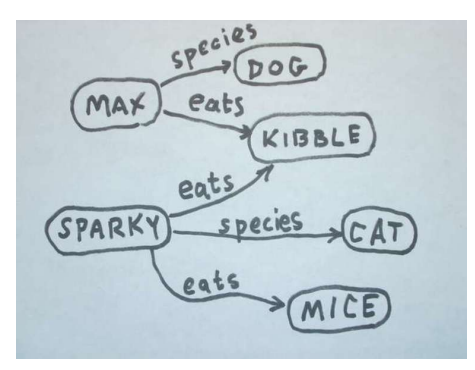
Connotation
Conventional and culturally established individual associations of a word.
Denotation
Core meaning, intensional + extensional meaning, sense (what it means) + reference(what it points to).. The dictionary defenition.
Connotation
Peripheral/additional meanings (i.e., contextual, emotional, evaluative, stylistic meanings. The deeper meaning- what we associate with the word. e.g The rose - love, beauty, or passion.
Denotation and Connotation (Synonyms)
>> Some word have the same general sense (denota&on) but different connota&ons.
>> naked/nude (adj.) DENOTATION: not covered by clothing
naked – CONNOTATION technical (animal/plants),
figura=ve (naked eye) nude – CONNOTATION people / art / films / law
Sense Relations;
① SYNONYMY/SYNONYMS
②ANTONYMY/ANTONYMS
③ HYPERONYMY/HYPO-HYPER-NYMS
④ MERONYMY/MERO-HOLO-NYMS
⑤ POLYSEMY/POLYSEMOUS WORDS
⑥HOMONYMY/HOMONYMS
Synonymy
Word relationship with nearly/quasi identical meanings
Antonymy
Word relationship with opposite/opposed meanings
Hyperonymy/Hypo-Hyper-nyms
Word relationship of super-/subordinated meanings
“animal” is a hypernym of “dog.” - hyponym

Meronymy/ Mero-Holo-nyms
Word relationship of part/whole meanings.
Example: “wheel” - meronym of “car holonym.
Polysemy/ Polysemous words
One word - various senses.Various senses of one word are semantically related.
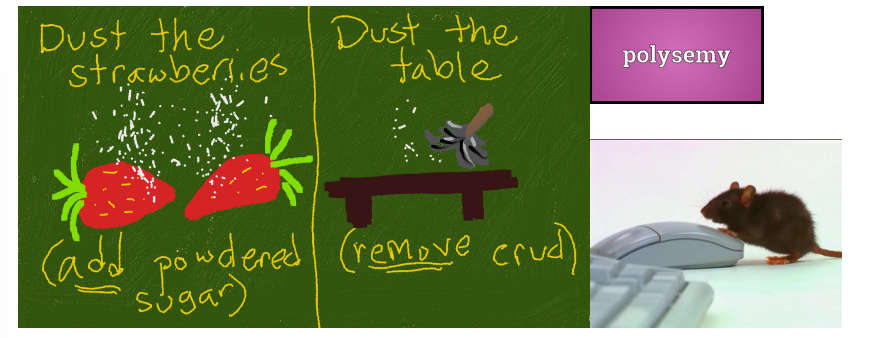
Homonymy
Two formally identical words - different meanings.
Homophones – Same sound, different meaning (and sometimes spelling)
Example: flower (plant) / flour (used in baking)
Homographs – Same spelling, different meaning (may sound the same or different)
Modelling sentence meaning
The verb carries the main meaning.
specific partners of verbs/verb arguments.
valency.

Argument Structure
The pattern of syntactic and semantic roles that verbs take in a sentence, determining how many and what types of noun phrases (arguments) are needed for the verb to express a complete thought.

Thematic(Semantic) roles
Specifies the semantic function of an argument in relation to the verb.
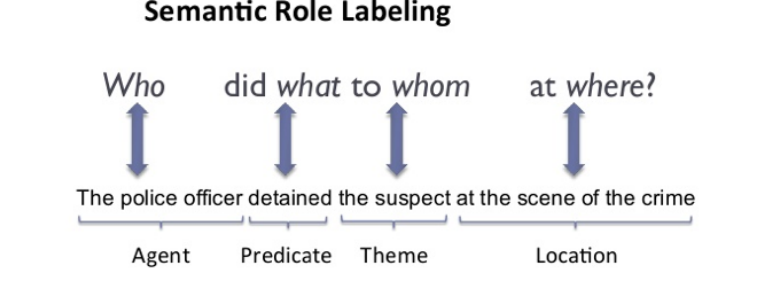
Semiotics
The study of language as a sign system.
NOTIONS ON LANGUAGE
>> SPECIFICALLY HUMAN
>> NON-INSTINCTIVE / CONSCIOUS METHOD OF COMMUNICATION
>> SYMBOLIC
>> COMPLEX FUNCTIONALITY
Properties of Natural (Human) Languages
① ARBITRARY
② DISPLACED
③DUAL
④PRODUCTIVE
⑤REFLEXIVE
⑥CULTURALLY TRANSMITTED
Arbitrary
Signs (words) are unmotivated and abstract. There’s no natural connection between a word’s form (its sounds or letters) and what it means. The link is purely by social agreement (e.g., nothing about the sounds “t‑r‑e‑e” inherently resembles the plant).
Displaced
Words can talk about items not present or fictional.
Dual
Words pattern on two levels: meaningless unit (sounds (like b, a, t) that have no meaning on their own)
and meaningful unit (when those sounds are combined into words (like bat), they create meaning)
Productive
Speakers create new expressions and utterances.
Reflexive
Language can be used to talk about itself.
Culturally Transmitted
Language is a social convention that is learned.
General Functions of Language (HALLIDAY)
① INSTRUMENTAL
②REGULATORY
③ INTERACTIONAL
④ PERSONAL
⑤REPRESENTATIONAL
⑥HEURISTIC
⑦IMAGINATIVE
Instrumental Function
Expressing a need (e.g., 'I want…').
Regulatory Function
Influencing someone else's behavior (e.g., 'Do as I tell you').
Interactional Function
Developing social relationships (e.g., 'me and you').
Personal Function
Expressing preferences and opinions (e.g., 'here I come').
Representational Function
Exchanging facts and information (e.g., 'this is what it's like').
Heuristic Function
Exploring the environment, asking questions (e.g., 'I don't understand this').
Imaginative Function
Playing and storytelling (e.g., 'Let me tell you a story/joke').
Meta-Functions (HALLIDAY)
1 EXPERIENTIAL FUNCTION
2 INTERPERSONAL FUNCTION
3 TEXTUAL FUNCTION
Experiential Function
Language expresses ideas based on speakers' experience.
Interpersonal Function
Language establishes social relations and influences behaviors.
Textual Function
Language builds connections and structure between ideas.
Language as a Set of Signs (Saussure)
Binary combinations of form (letters/sounds) and meaning (concepts).
Words are: 1 arbitrary, 2 conventional, 3 associative
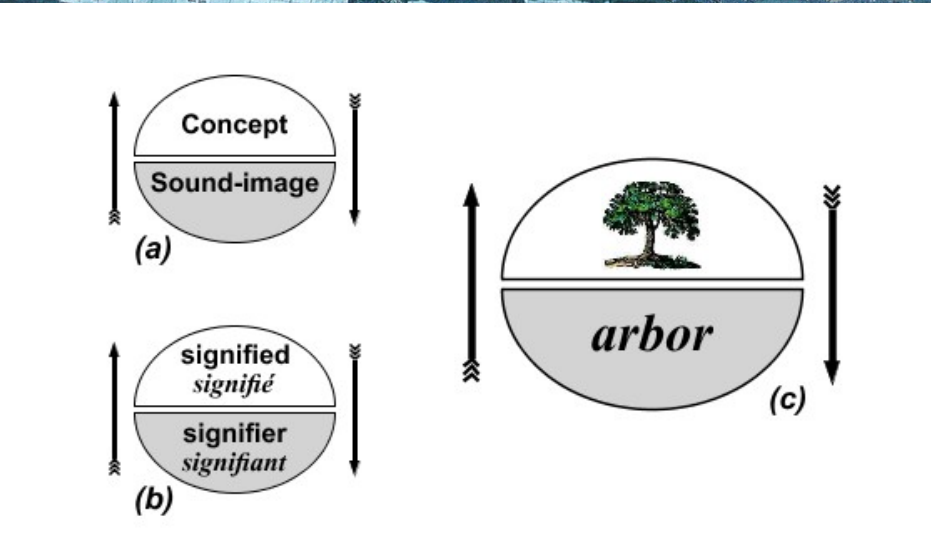
Words are
: 1 arbitrary,
2 conventional (Words are based on agreed-upon usage.)
3 associative (Words are linked to concepts.)
Signs and their Relations (CHARLES SANDERS PEIRCE)
In meaning-making, signs are related to other elements: 1 a concept (INTERPRE- TANT), 2 an object in the world (OBJECT/REFERENT)
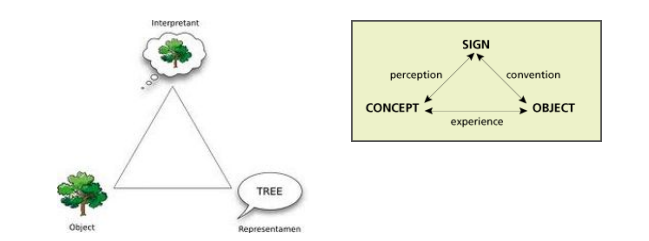
Interpretant
A concept associated with a sign.
Object/Referent
An object in the world to which a sign refers.
Semiotic/Semantic Triangle (MORRIS)
Meaning emerges from a triangular relation between 1 term (WORD), 2 concept (MENTAL REPRESENTATION), and 3 referent (OBJECT)
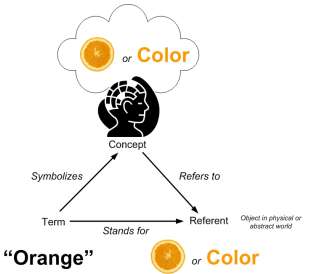
Valency
The capacity of a sign to evoke or connect to multiple meanings and associations.
Intransitive
Verbs with one argument (e.g., “She sleeps”).
transitive
Verbs with two arguments(e.g., “He eats an apple”).
ditransitive
Verbs with three arguments (e.g., “She gave him a gift”)
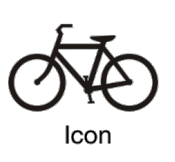
Icon
A sign that resembles its object/referent (similarity).

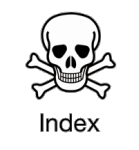
Index
An object/referent causes a sign (logic-experience).

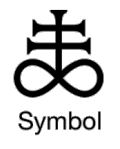
Symbol
No relation between sign/object (arbitrary).

Speech Circuit
How communicators exchange signs.Communicators exchange signs: A produces a sign, B receives the sign Phona*on (speaking) and audi*on (listening) alternate Communica*on involves a re-coding of signs from form to meaning (audi*on) and from meaning to form (phona*on)
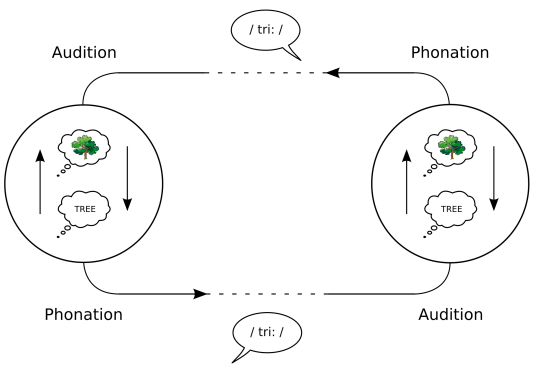
Organon Model KARL BÜHLER (
Relationship between signs and elements of a communicative situation.The 'organon' model shows the rela*onship between signs and elements of a communica*ve situa*on: 1 sender, 2 receiver, 3 context (physical world) The model claims three sign func*ons: 1 expression (AUSDRUCK), 2 appeal (APPELL), 3 representa*on (DARSTELLUNG)
